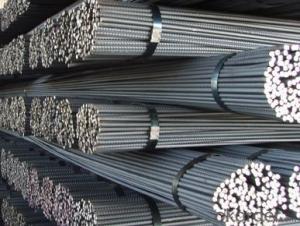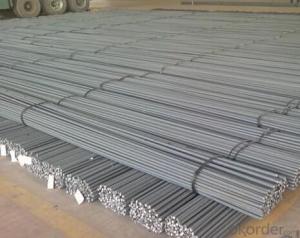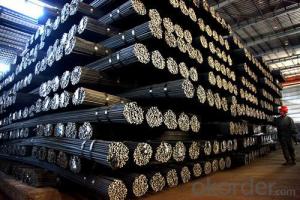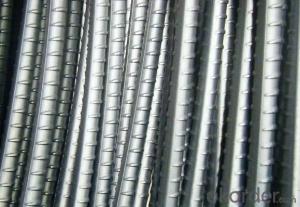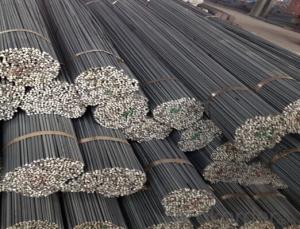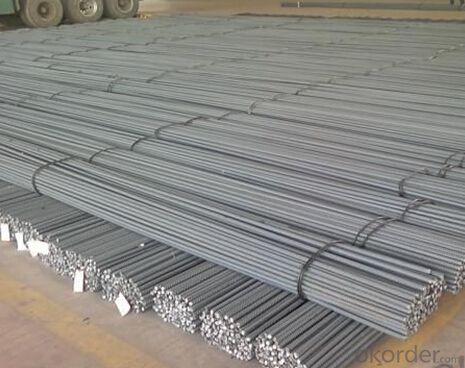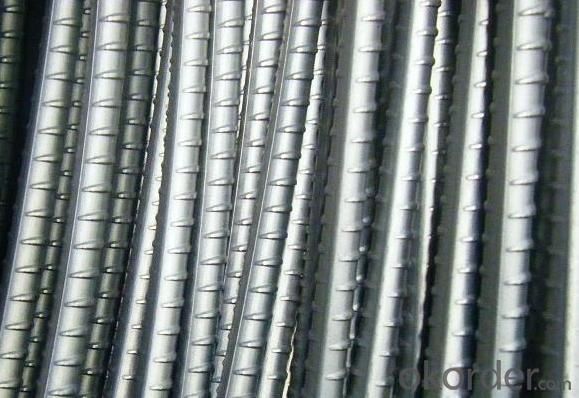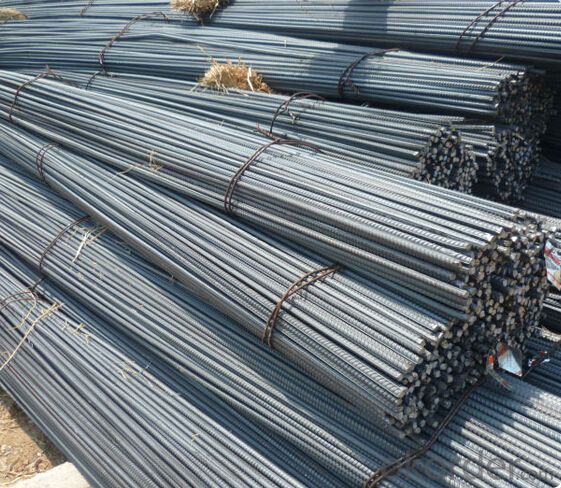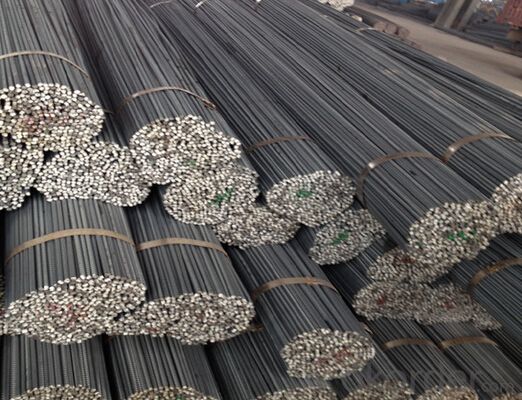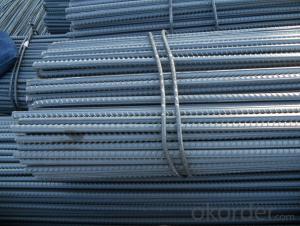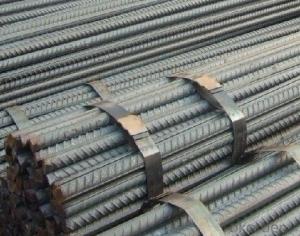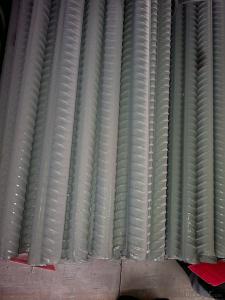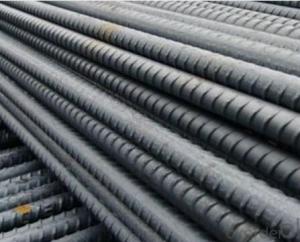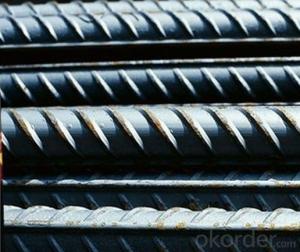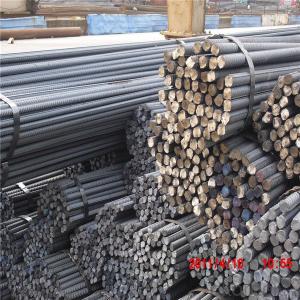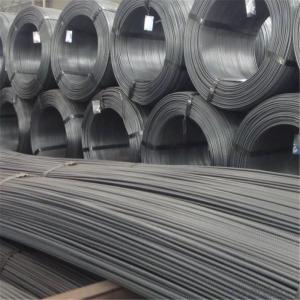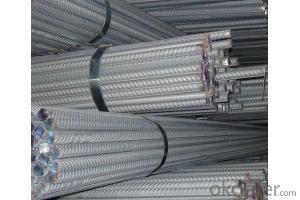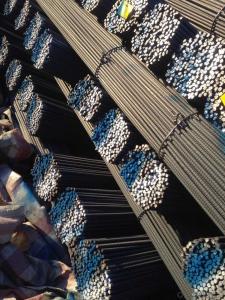Reinforcement Steel Rebar Turkey/Steel Reinforcement
- Loading Port:
- Tianjin
- Payment Terms:
- TT OR LC
- Min Order Qty:
- 100 m.t.
- Supply Capability:
- 10000 m.t./month
OKorder Service Pledge
Quality Product, Order Online Tracking, Timely Delivery
OKorder Financial Service
Credit Rating, Credit Services, Credit Purchasing
You Might Also Like
Specification
Standard:
AISI,JIS,GB,BS,DIN,API,EN,ASTM
Technique:
Hot Rolled,Cold Rolled,Cold Drawn,ERW,Forged,Saw,Extruded,EFW,Spring
Shape:
Round,U Channel,Square,C Channel,Hexagonal,Rectangular,Oval,LTZ
Surface Treatment:
Galvanized,Coated,Copper Coated,Color Coated,Oiled,Dry,Chromed Passivation,Polished,Bright,Black,PVDF Coated
Steel Grade:
Q195,Q215,Q235,Q215B,Q235B,RHB335,HRB400,200 Series,300 Series,400 Series,600 Series,SS400-SS490,10#,20#,A53(A,B)
Certification:
ISO,SGS,BV,IBR,RoHS,CE,API,BSI,UL
Thickness:
6-34mm
Width:
6-34mm
Length:
12m
Outer Diameter:
6-34mm
Net Weight:
10kg
Packaging:
seaworthy packaging
Reinforcement Steel Rebar Turkey/Steel Reinforcement
Details of the Reinforcement Steel Rebar Turkey/Steel Reinforcement
| Standard & Grade: | GB1499-98 : HRB335,HRB400,HRB500 |
| BS4449-1997 : GR460,GR500 | |
| CAN/CSA-G30.18-M92 : 400W | |
| ASTM A615 : Gr.40, Gr.60 | |
| Diameter: | 6mm;8mm;10mm;12mm;14mm;16mm;18mm;20mm;22mm;25mm;28mm;30mm;32mm;35mm;40mm |
| Length: | 6m,9m,12m |
| Packing: | Bundle packing |
| Origin: | China |
| Application: | Construction,Road,Machinery processing,Welding fields. |
| Delivery time: | 10-25 days |
| Shipment: | By bulk vessel or Container |
| Documents: | Mill Test Certificate,Commercial Invoice,Packing List,Certificate of Origin |
Company Introduction of the Reinforcement Steel Rebar Turkey/Steel Reinforcement
CNBM International Corporation is the most import and export platform of CNBM group(China National Building Material Group Corporation) ,which is a state-owned enterprise, ranked in 270th of Fortune Global 500 in 2015.
With its advantages, CNBM International are mainly concentrate on Cement, Glass, Iron and Steel, Ceramics industries and devotes herself for supplying high quality series of refractories as well as technical consultancies and logistics solution.

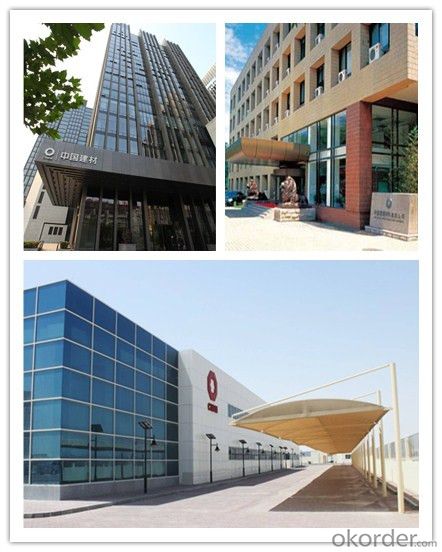
Packaging & Delivery of the Reinforcement Steel Rebar Turkey/Steel Reinforcement
| Packaging Detail | Sea worthy packing /as per customer's packing instruction |
| Delivery Detail | 15 ~ 40 days after receiving the deposit |
FAQ
| Are you a trading company or manufacturer? | Manufacturer |
| What’s the MOQ? | 1000m2 |
| What’s your delivery time? | 15-20 days after downpayment received |
| Do you Accept OEM service? | Yes |
| what’s your delivery terms? | FOB/CFR/CIF |
| What's the Payment Terms? | 30% as deposit,70% before shipment by T/T |
| Western Union acceptable for small amount. | |
| L/C acceptable for large amount. | |
| Scrow ,Paybal,Alipay are also ok | |
| Why choose us? | Chose happens because of quality, then price, We can give you both. Additionally, we can also offer professional products inquiry, products knowledge train (for agents), smooth goods delivery, excellent customer solution proposals. |
| What's your available port of Shipment? | Main Port, China |
| What’s your featured services? | Our service formula: good quality+ good price+ good service=customer's trust |
| Where are your Market? | Covering more than 160 countries in the world |
- Q: What is the role of steel rebars in pile foundation construction?
- Pile foundation construction heavily relies on steel rebars, as they serve a vital purpose. These foundations are designed to shift the weight of a structure to deeper layers of soil or rock, ensuring stability and preventing any settling. Steel rebars are utilized in this process to reinforce the concrete piles, thereby increasing their strength and durability. The primary function of steel rebars within pile foundation construction is to provide tensile strength to the concrete. Although concrete is strong under compression, it lacks the ability to withstand tension. By incorporating steel rebars into the concrete, it creates a reinforced structure capable of withstanding both compression and tension forces. In addition, steel rebars play a significant role in preventing cracking and providing structural integrity to the piles. As the piles are subjected to various loads, including vertical and lateral forces, the rebars distribute these loads evenly, preventing any cracking or failure of the concrete under stress. This ensures the stability and longevity of the pile foundation. Moreover, steel rebars contribute to the overall performance of the piles. They enhance the load-carrying capacity of the foundation, enabling it to support heavier structures or loads. The rebars also improve the resistance of the piles against external factors such as earthquakes, wind loads, and soil movement. In summary, steel rebars are essential in pile foundation construction, providing tensile strength, preventing cracking, and enhancing the overall performance and durability of the foundation. Their utilization ensures efficient load transfer and stability, making them an integral component in the construction of robust and dependable structures.
- Q: Can steel rebars be used in structures with high electromagnetic shielding requirements?
- To a certain extent, structures with high electromagnetic shielding requirements can make use of steel rebars. Steel is inherently conductive, meaning it can redirect and absorb electromagnetic waves, which is why steel rebars are beneficial for reducing the infiltration of electromagnetic radiation into structures. Nevertheless, it is important to consider that the effectiveness of steel rebars in providing electromagnetic shielding relies on various factors. The thickness and quality of the steel rebars, the design and construction of the structure, and the frequency and intensity of the electromagnetic waves all contribute to determining the level of shielding that can be achieved. In situations where extremely high electromagnetic shielding requirements are necessary, additional measures may be required. These measures may involve the utilization of specialized materials that are specifically designed for electromagnetic shielding, such as conductive coatings or composite materials with high conductivity. Furthermore, it is crucial to take into account the overall design and construction of the structure to ensure that the steel rebars are properly grounded. Proper grounding facilitates the safe channeling and dissipation of electromagnetic energy, preventing the accumulation of potentially hazardous electromagnetic fields. In conclusion, although steel rebars can contribute to electromagnetic shielding in structures, the level of shielding provided can vary depending on multiple factors. For structures with stringent electromagnetic shielding requirements, it is advisable to seek guidance from experts in the field to determine the most suitable materials and construction techniques.
- Q: Can steel rebars be bent without breaking?
- Certainly, steel rebars possess the remarkable ability to undergo bending without experiencing any fractures. These rebars are engineered using an incredibly resilient and durable material known as steel, which boasts exceptional flexibility and tensile strength. Consequently, steel rebars have the capacity to endure substantial bending forces without succumbing to breakage or fracturing. Nevertheless, it is imperative to bear in mind that there exist limitations to the extent to which a steel rebar can be bent without inflicting damage. In the event that excessive force is applied or if the rebar is bent beyond its maximum bending capacity, it may eventually yield and break. Consequently, it is of utmost importance to meticulously adhere to industry guidelines and specifications when manipulating steel rebars, as this guarantees their structural performance and integrity.
- Q: How are steel rebars used in construction?
- Steel rebars, also known as reinforcing bars, play a crucial role in construction projects. They are primarily used to reinforce concrete structures and provide strength and stability to building elements such as beams, columns, slabs, and foundations. In construction, rebars are typically laid in a grid pattern within the concrete formwork before pouring the concrete. This grid formation allows the rebars to distribute the tensile forces that occur in concrete structures, preventing cracking and enhancing structural integrity. The rebars are carefully placed at specific locations within the concrete elements based on the design and engineering specifications. They are generally spaced apart at predetermined intervals to ensure optimal reinforcement and to bear the anticipated loads. During the concrete pouring process, the wet concrete fully envelops the rebars, creating a bond between the two materials. As the concrete hardens and cures, it tightly grips the rebars, creating a composite structure that can resist bending, shearing, and other types of stress. Steel rebars are available in various sizes and grades, depending on the specific requirements of the construction project. They are typically made from carbon steel and may have different surface finishes to enhance their bonding capabilities with concrete. In addition to providing strength, rebars also help in controlling cracking caused by shrinkage, temperature changes, and external forces. By absorbing and distributing these forces, they minimize the risk of structural failure and ensure the overall stability and durability of the concrete components. Overall, steel rebars are essential components in construction as they reinforce concrete structures, increase load-bearing capacity, and enhance the longevity of buildings and infrastructure. Their proper placement and utilization are critical for building resilience, safety, and structural integrity.
- Q: How do steel rebars affect the overall stability of concrete structures?
- Steel rebars play a crucial role in enhancing the overall stability of concrete structures. The addition of steel rebars to concrete significantly increases its tensile strength, which is a property that concrete inherently lacks. Concrete is excellent in resisting compressive forces but weak in resisting tensile forces. By incorporating steel rebars into the concrete, the structure becomes more durable and resistant to cracking and deformation. The rebars act as reinforcement by absorbing the tensile stresses that occur due to external loads or internal forces. When these forces are applied, the concrete transfers the tensile stress to the rebars, allowing them to bear the load. This prevents the concrete from cracking and failing under tension, as the rebars strengthen the structure and distribute the forces more evenly. Moreover, steel rebars provide stability and structural integrity to concrete structures in the event of earthquakes or other natural disasters. The rebars help to resist the lateral forces that occur during seismic events, preventing the structure from collapsing or undergoing significant damage. This is particularly important in high-rise buildings or structures that are subjected to heavy loads, where the presence of rebars ensures the overall stability and safety of the structure. Additionally, steel rebars can improve the durability and longevity of concrete structures. By inhibiting cracking and reducing the potential for corrosion, the rebars protect the concrete from environmental factors such as moisture, chemicals, and temperature fluctuations. This helps to maintain the integrity of the structure over time and reduces the need for frequent repairs or replacements. In summary, steel rebars play a vital role in enhancing the overall stability of concrete structures. They provide the necessary tensile strength that concrete lacks, allowing it to withstand external loads and internal forces without cracking or failing. The presence of rebars also ensures structural integrity during seismic events and improves the durability of the concrete. Overall, steel rebars are essential components in constructing strong, safe, and long-lasting concrete structures.
- Q: How do steel rebars help in preventing cracks in concrete?
- Steel rebars help in preventing cracks in concrete by providing reinforcement and increasing the tensile strength of the structure. When concrete is subjected to tensile forces, it tends to crack. However, the presence of steel rebars within the concrete helps distribute these forces, absorbing the tension and preventing cracks from forming or growing. The rebars act like a skeleton, enhancing the structural integrity and durability of the concrete, ensuring it can withstand various loads and external pressures without significant damage.
- Q: What are the guidelines for the proper spacing of steel rebars in columns?
- The guidelines for the proper spacing of steel rebars in columns are provided by various national and international codes and standards, such as the American Concrete Institute (ACI) and the British Standards Institution (BSI). These guidelines ensure the structural integrity and durability of the reinforced concrete columns. The spacing of steel rebars in columns is primarily determined by the following factors: 1. Concrete cover: The minimum concrete cover is specified by the codes to protect the steel reinforcement from corrosion and provide fire resistance. The spacing between rebars should be such that the required concrete cover is maintained uniformly around each rebar. 2. Rebar diameter: The size or diameter of the rebars influences their spacing. The codes specify the minimum clear spacing between adjacent rebars based on their diameter to prevent congestion and ensure proper concrete placement. 3. Column dimension: The size and shape of the column also play a significant role in determining the rebar spacing. Larger columns may require additional rebars compared to smaller ones to provide adequate reinforcement and resist the applied loads. 4. Load and design requirements: The design loads, including dead loads, live loads, and seismic loads, impact the spacing of rebars. The codes provide guidelines on the minimum amount of reinforcement required based on the column's dimensions and the anticipated loads. 5. Structural detailing: Proper detailing is essential to ensure the rebars are adequately anchored and lapped to develop the required bond strength. Guidelines for lapping lengths, anchorage lengths, and splices are provided in the codes to ensure the transfer of forces between the rebars and concrete. It is crucial to consult the specific code or standard applicable in your region to determine the exact guidelines for the spacing of steel rebars in columns. Additionally, it is recommended to engage a qualified structural engineer or designer to perform detailed analysis and design of reinforced concrete columns to ensure compliance with the appropriate guidelines and achieve a safe and efficient structural system.
- Q: Can steel rebars be used in structures with limited construction budget?
- Indeed, structures with a limited construction budget can incorporate steel rebars. The utilization of steel rebars is widespread in construction due to their robustness and durability. They contribute to the support and reinforcement of concrete, enhancing its resistance to tension and cracking. Although steel rebars may entail higher initial expenses in comparison to alternative materials, they present long-term economic benefits. By employing steel rebars, structures can enjoy an extended lifespan, thereby reducing the necessity for frequent repairs or replacements. Moreover, the prefabrication of steel rebars saves time and labor costs during the construction process. Additionally, steel rebars can be effortlessly recycled, rendering them a sustainable preference for construction projects. The recycling of steel diminishes the requirement for extracting raw materials and lessens the environmental impact. All in all, steel rebars represent an exceptional option for structures operating within limited construction budgets. They provide durability, longevity, and cost savings in the long run, thereby constituting a financially prudent choice for construction projects.
- Q: How do steel rebars impact the durability of concrete structures?
- The durability of concrete structures is significantly influenced by steel rebars. Adding steel rebars improves the strength and overall performance of concrete, making it more resistant to various external forces and extending its lifespan. To begin with, steel rebars offer structural reinforcement to concrete structures. Concrete has relatively low tensile strength, making it susceptible to cracking and failure under tensile stresses. By incorporating steel rebars into the concrete, these stresses are effectively distributed throughout the structure, preventing the formation of cracks and enhancing its load-bearing capacity. This reinforcement ensures that the concrete structure can withstand the forces it experiences, whether from gravity, wind, earthquakes, or other external factors. Additionally, steel rebars play a vital role in corrosion prevention in concrete structures. Concrete is highly alkaline, creating a protective environment for embedded steel. However, factors like moisture exposure, chloride ions, and carbonation can break down this protective layer over time, leading to steel corrosion. Corrosion weakens the rebars and causes the surrounding concrete to crack and spall, compromising the structure's durability. By using steel rebars with appropriate coatings or stainless steel, the risk of corrosion is significantly reduced, enhancing the structure's longevity and durability. Furthermore, steel rebars contribute to the durability of concrete structures by providing dimensional stability. Concrete tends to shrink and expand due to temperature and moisture changes, which can result in cracking and deformation. Incorporating steel rebars helps minimize these movements by providing restraint and stabilizing the structure, preventing excessive cracking and maintaining its integrity over time. In conclusion, steel rebars play a crucial role in enhancing the durability of concrete structures. They provide structural reinforcement, prevent corrosion, and ensure dimensional stability. By incorporating steel rebars into concrete, structures become stronger, more resistant to external forces, and have an extended lifespan. This ultimately leads to safer and more durable buildings and infrastructure.
- Q: How are steel rebars used in flat slabs and beams?
- Steel rebars are used in flat slabs and beams to enhance the structural integrity and strength of concrete. They are embedded within the concrete to provide reinforcement and prevent cracking or failure due to tensile forces. Rebars help distribute the load evenly across the structure, increasing its load-bearing capacity and improving overall durability.
Send your message to us
Reinforcement Steel Rebar Turkey/Steel Reinforcement
- Loading Port:
- Tianjin
- Payment Terms:
- TT OR LC
- Min Order Qty:
- 100 m.t.
- Supply Capability:
- 10000 m.t./month
OKorder Service Pledge
Quality Product, Order Online Tracking, Timely Delivery
OKorder Financial Service
Credit Rating, Credit Services, Credit Purchasing
Similar products
Hot products
Hot Searches
Related keywords
